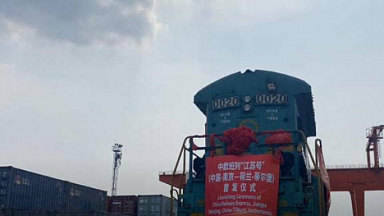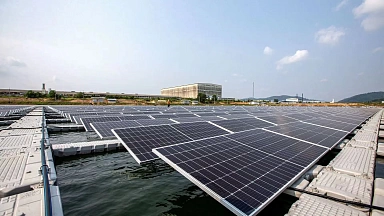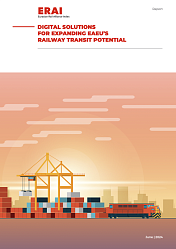According to BBVA Research, the global economy continues to show resilience even as tariff barriers rise and policy uncertainty persists. Global GDP growth is expected to ease gradually, from 3.3% in 2024 to 3.0% in 2025 and 3.1% in 2026, which reflects a soft moderation rather than a sharp slowdown.
In the United States, inflation remains close to 3%, still influenced by tariff actions and labor-market constraints. In the Eurozone, inflation has settled near 2%, while in China price pressures remain minimal. BBVA Research expects the Federal Reserve to keep policy rates around 3% by 2026, with the European Central Bank maintaining rates close to 2%. Under these conditions, global markets continue to show a surprisingly positive tone, supported by looser monetary conditions and sustained investor appetite for technology-related assets.
EU Imports from China: Higher Volumes, Lower Prices
BBVA Research indicates that trade between the EU and China remains one of the most stable major trade corridors worldwide. While US — China trade flows have weakened noticeably, EU — China flows at the start of 2025 remain broadly unchanged compared with 2024, as reflected in the relatively flat trade-flow curves.
A key trend highlighted in the report is the simultaneous rise in the volume of Chinese exports and the decline in their export prices. The Chinese export-volume index (2019Q4 = 100) climbs above 150 in early 2025. In contrast, the export-price index falls below 100, indicating a clear decrease. As a result, the export-value index grows much more slowly than the volume index, a sign that Chinese goods are becoming cheaper while their presence in the European market continues to expand.
This combination of rising volumes and falling prices increases competitive pressure on EU producers and generates a disinflationary effect in the Eurozone, which is also visible in the comparison between Chinese export prices and Eurozone inflation dynamics.
EU Dependence on China’s Foreign Value Added
The BBVA charts on foreign value added show that China provides the largest share of foreign value added embedded in EU exports, over 40%, according to the distribution in the figure. In sectors such as machinery, electronics and assembly-based manufacturing, China’s contribution becomes dominant. This illustrates a deepening structural dependence: EU exporters increasingly rely on Chinese intermediate inputs, and this dependence is growing across multiple industries.
China’s Leadership in Clean Technologies
The report also emphasizes China’s dominant role in clean-technology manufacturing. China accounts for around 70% of global output in key clean-energy components, including solar panels, wind-turbine equipment and battery technologies. As a result, the EU imports a significant share of these essential technologies, batteries, solar PV modules, heat pumps and other energy-system equipment from China. This creates a new strategic vulnerability for Europe, particularly as clean-tech supply chains become more geopolitically sensitive.
In the long term, cooperation between the EU and China in green technologies and digital transformation could serve as an important driver of sustainable economic growth. According to BBVA Research, constructive engagement combined with efforts to safeguard European technological and environmental standards may help set a more balanced and forward-looking trajectory for bilateral relations.
In an increasingly fragmented global economy, trade between Europe and Asia, especially between the EU and China, remains one of the key anchors of global stability.



